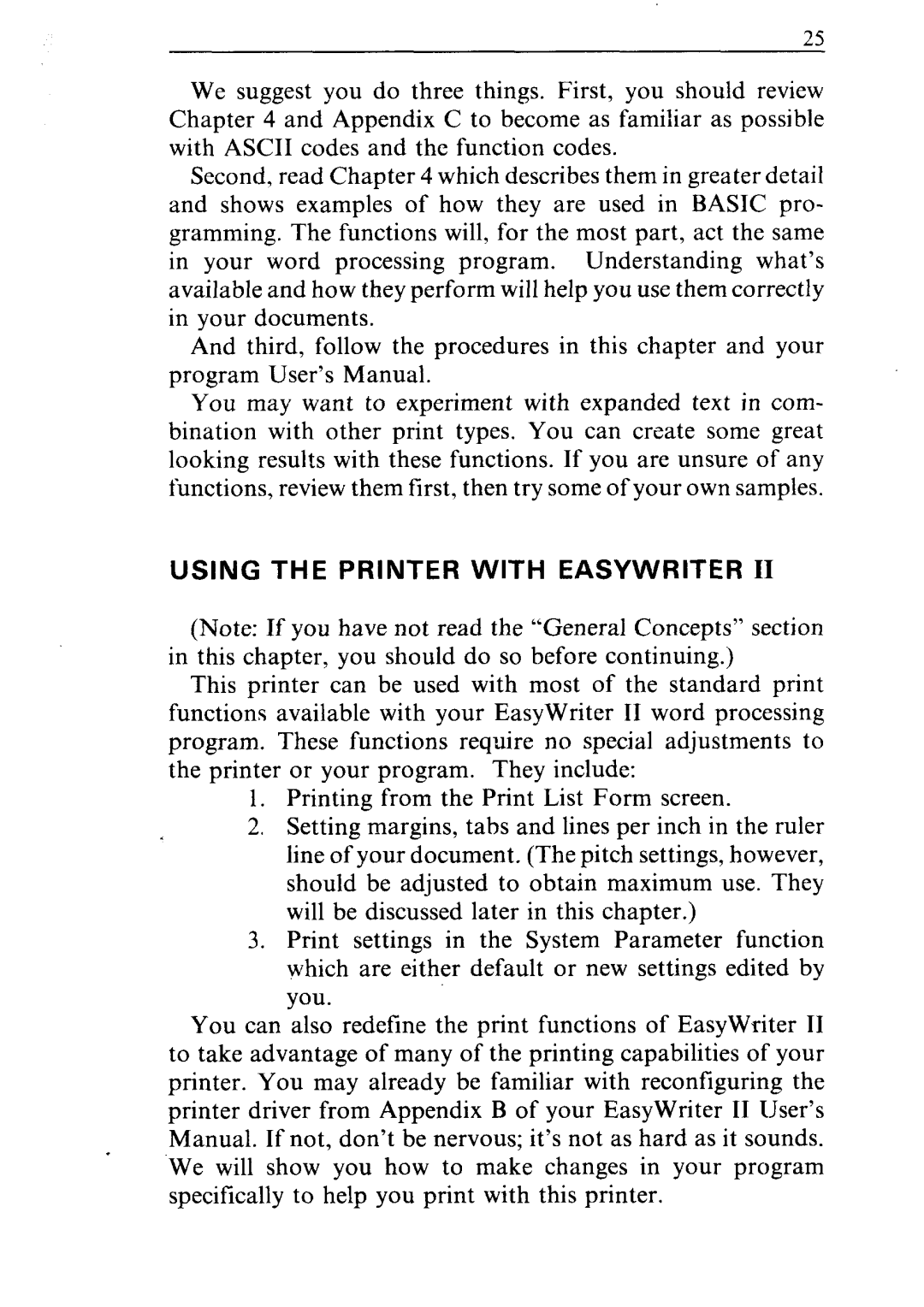
25
We suggest you do three things. First, you should review Chapter 4 and Appendix C to become as familiar as possible with ASCII codes and the function codes.
Second, read Chapter 4 which describes them in greater detail and shows examples of how they are used in BASIC pro- gramming. The functions will, for the most part, act the same
in your word processing program. Understanding what’s available and how they perform will help you use them correctly in your documents.
And third, follow the procedures in this chapter and your program User’s Manual.
You may want to experiment with expanded text in com- bination with other print types. You can create some great looking results with these functions. If you are unsure of any functions, review them first, then try some of your own samples.
USING THE PRINTER WITH EASYWRITER II
(Note: If you have not read the “General Concepts” section in this chapter, you should do so before continuing.)
This printer can be used with most of the standard print functions available with your EasyWriter II word processing program. These functions require no special adjustments to the printer or your program. They include:
1.Printing from the Print List Form screen.
2.Setting margins, tabs and lines per inch in the ruler line of your document. (The pitch settings, however, should be adjusted to obtain maximum use. They will be discussed later in this chapter.)
3.Print settings in the System Parameter function which are either default or new settings edited by
you.
You can also redefine the print functions of EasyWriter II to take advantage of many of the printing capabilities of your printer. You may already be familiar with reconfiguring the printer driver from Appendix B of your EasyWriter II IJser’s
. Manual. If not, don’t be nervous; it’s not as hard as it sounds. We will show you how to make changes in your program specifically to help you print with this printer.
